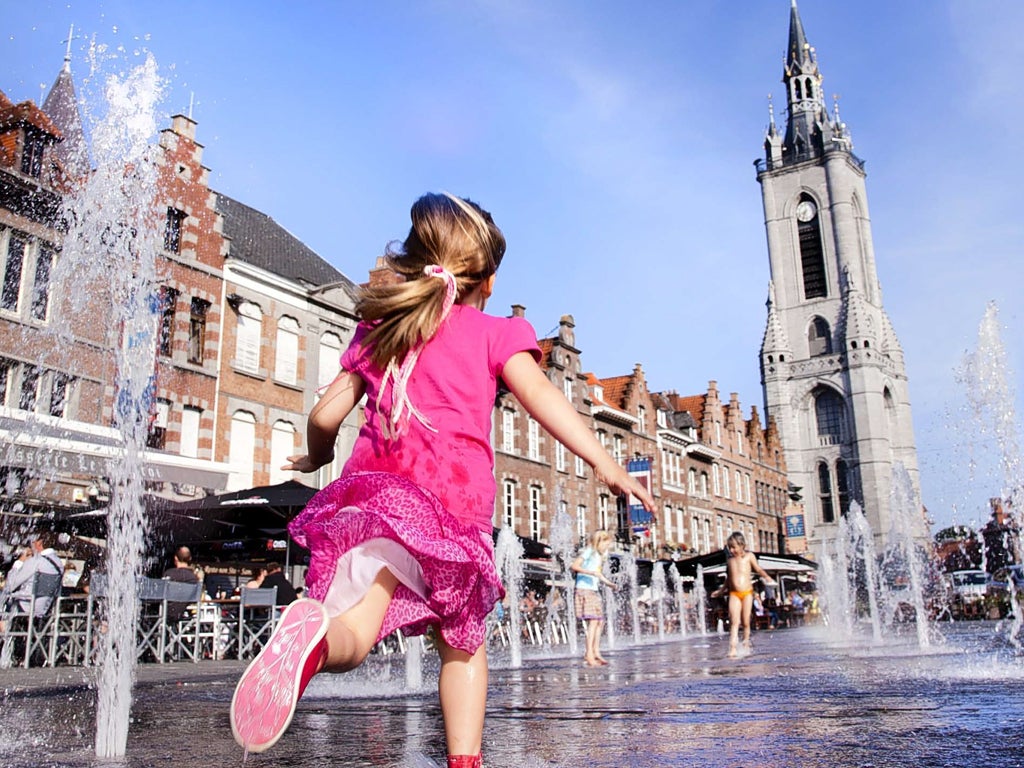Tournai: Belgium’s best-kept secret
Resilient in the face of what the past has put its way, Tournai remains a visual feast. By Philip Sweeney

Considering the surfeit of building sites, Tournai manages to be a visual delight. And it has solid excuses for its disarray: the combined effects of several dozen sieges, a storm of biblical proportions, two World Wars and a tornado, in roughly that order. There’s another misfortune for its inhabitants but a bonus for visitors – it’s under-endowed with tourists.
It was the 1999 tornado, the most un-Belgian of weather events, which took out Tournai’s greatest architectural prize, the five-towered Cathedral of Notre-Dame. It tilted the huge edifice enough to require stabilisation work that will have sections of it under wraps for at least another decade. It’s still partly visitable, and inside there’s a nifty model made of clothes pegs which illustrates clearly the distinct halves which make the ensemble one of the most important in Western Europe. One half is Romanesque; the other the newly fashionable (in the 12th century) Gothic.
Tournai itself was once high in the ranks of important European cities. Its vast history is replete with Romans, Merovingians and Spanish, iconoclasts, revolutionaries and Jesuits. It includes a brief English period, occupied by Henry VIII, and a spell as the fourth most important city of France.
Near the Cathedral stands Tournai’s second glory: its belfry. It is the oldest in Belgium, and still emits a delicate and mellifluous set of chimes. Beside the belfry is, as you would expect, the Grand-Place. Tournai’s main square is actually triangular and extremely functional, with bookshops, banks, florists and pharmacies in addition to the numerous cafés and restaurants. The space is also extremely beautiful, the gilded, step-fronted 17th-century brick façades bedecked with repro guild banners. It’s with surprise you realise that most of the buildings are recent reconstructions. The magnificent Draper’s Hall was destroyed first by the huge storm in 1606 then a second time by German bombs in 1940. Here and there, date stones indicate a building that dates not from 1650, as it appears, but from 1950. There are also many victims to the later Allied bombardment, aimed at disrupting the German army’s retreat through the railway station in 1944.
Tournai’s post-war reconstruction was a model of sensitivity, because scarcely a single 1960s monstrosity mars the harmony of the broad, cobbled streets. Blocks of attractive 1950s brick fill gaps discreetly with tastefully old-fashioned shops, often surmounted by spacious looking inhabited apartments. As you walk further through the quiet surrounding quartiers, each named after its church, you pass rows of solid artisans’ houses, grander Louis XV developments, 19th-century terraces, and here and there little gems of Art Nouveau.
Tournai’s major gem of Art Nouveau is its Beaux Arts Museum, the work of the celebrated architect Victor Horta. It is set behind the town hall in the wooded gardens of the old abbey of Saint Martin. The museum’s big attractions include early Flemish and Impressionist works, among them the only two Manets exhibited in Belgium: Argenteuil and Chez le Père Lathuille. It was with some disgruntlement that I learnt that many of these were in storage to make room for a big exhibition about a children’s cartoon character named Martine. An hour later, I was a Martine convert, impressed by the exquisite draughtsmanship of the celebrated Tournai-born illustrator Marcel Marlier, whose vast output will next year have a permanent museum in nearby Mouscron.
The publisher of the Martine books, Casterman, is a local firm that achieved international importance in the world of bande dessinée, and the rambling old Casterman complex is now an interesting part of a stroll around the old Saint Jacques district north of the Beaux Arts, a gradually gentrifying grid of historic barracks, butchers’ shops, bourgeois houses and former Resilient in the face of what the past has put its way, Tournai remains a visual feast. By Philip Sweeney lodgings for pilgrims on one of the Santiago routes which begins at Tournai.
While the Grand-Place is still the main focus of café life, the refurbished quays of the River Escaut, a 10-minute walk away, now offer competition. Bisecting the town through its centre, and once dividing the Dutch northern half from the French south, the Escaut was a transport artery for Tournai. You still see big barges, laden with sand or oil or even containers, gliding slowly past the fashionable new café terraces and under the most easterly of Tournai’s bridges – the wonderful 13th-century Pont des Trous.
The bridge’s gates were designed to deny river access to the walled city, and unfortunately they’re doing it very well to the larger craft today, which is the cause of much controversy surrounding the bridge’s possible modification.
This controversy has been energetically entered into by Tournai’s newest celebrity resident, the actor Gérard Depardieu, who recently joined the influx of moneyed French buying homes across the border. Depardieu has a wine bar soon to open behind the cathedral, and, meanwhile, can often be spotted attablé at the Si Jamais restaurant on the Grand-Place. France’s national treasure/public enemy knows his grub, and Si Jamais is one of the best of Tournai’s many excellent eating places – another winning dimension to an overlooked city.
Travel Essentials
Visiting there
Musée des Beaux-Arts, Enclos Saint-Martin (00 32 69 33 24 31; tournai.be/musee-beaux-arts).
Eating there
Si Jamais, 9 Grande Place (00 32 69 76 67 29; sijamais.be).
More information whybelgium.co.uk; 020 7531 0390
Subscribe to Independent Premium to bookmark this article
Want to bookmark your favourite articles and stories to read or reference later? Start your Independent Premium subscription today.

Join our commenting forum
Join thought-provoking conversations, follow other Independent readers and see their replies